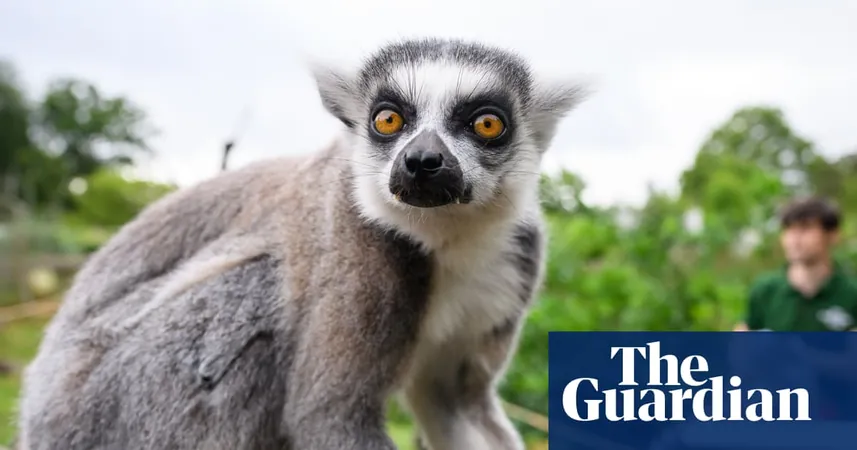
Unlocking Evolution: How Long Thumbs Could Be the Key to Bigger Brains in Primates!
2025-08-26
Author: Jacob
Can Thumb Length Reveal Intelligence?
Have you ever wondered if our fingers have more to say about our brains than just grip strength? A groundbreaking study has uncovered a fascinating connection between the length of primates' thumbs and the size of their brains, suggesting a profound evolutionary link between manual dexterity and cognitive abilities.
The Evolutionary Connection
Lead researcher Dr. Joanna Baker from the University of Reading posits an intriguing scenario: imagine our primate ancestors growing more intelligent as they fine-tuned their hand movements. Longer thumbs may have allowed these mammals to manipulate their environment more effectively, leading to greater success in survival and, ultimately, evolution.
The Science Behind the Findings
In a comprehensive study, Baker and her team analyzed the thumb lengths and estimated brain masses of 94 primate species, ranging from our ancient relatives to modern lemurs. The results revealed that humans, along with most other hominins, boast significantly longer thumbs than one would expect from the general proportions found in primates.
Brain Size and Thumb Length: A Surprising Link
But here’s the kicker: the research found that as thumb length increases relative to overall hand size, brain size tends to increase as well! Dr. Baker notes, "If you have a longer thumb, regardless of your species, you also tend to have a larger brain. It’s a remarkable trend across the primate family tree."
A Notable Exception: Australopithecus Sediba
Interestingly, the early hominin Australopithecus sediba was an anomaly in the data, possessing a thumb longer than expected for its brain size. This unusual trait might be a byproduct of its arboreal lifestyle, showcasing the complexity of evolutionary adaptations.
The Neocortex Takes Center Stage
Delving deeper into the brain, researchers discovered that it’s the neocortex—the area responsible for advanced cognitive functions— that tends to be larger in primates with longer thumbs. This revelation shifts the focus from expected motor control regions of the brain, adding a surprising twist to our understanding of intellect and dexterity.
Thumb Length Alone Can't Tell the Whole Story
However, Baker warns against oversimplifying this relationship. The study indicates that simply measuring thumb length is insufficient for predicting tool use among primates. Brain size varied consistently across species, irrespective of their tool-using habits.
Looking Ahead: Understanding Human-like Dexterity
Dr. Fotios Alexandros Karakostis, a biological anthropology expert not involved in the study, emphasizes the need for a broader exploration of what constitutes manual dexterity. Understanding our evolutionary past will require integrating various anatomical traits and deeper experimental research.
As we continue to unravel the complexities of evolution, one thing is clear—our thumbs may have played a more significant role in shaping our minds than we ever imagined!









 Brasil (PT)
Brasil (PT)
 Canada (EN)
Canada (EN)
 Chile (ES)
Chile (ES)
 Česko (CS)
Česko (CS)
 대한민국 (KO)
대한민국 (KO)
 España (ES)
España (ES)
 France (FR)
France (FR)
 Hong Kong (EN)
Hong Kong (EN)
 Italia (IT)
Italia (IT)
 日本 (JA)
日本 (JA)
 Magyarország (HU)
Magyarország (HU)
 Norge (NO)
Norge (NO)
 Polska (PL)
Polska (PL)
 Schweiz (DE)
Schweiz (DE)
 Singapore (EN)
Singapore (EN)
 Sverige (SV)
Sverige (SV)
 Suomi (FI)
Suomi (FI)
 Türkiye (TR)
Türkiye (TR)
 الإمارات العربية المتحدة (AR)
الإمارات العربية المتحدة (AR)